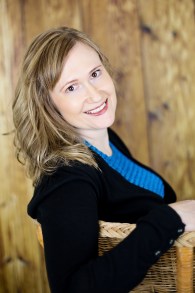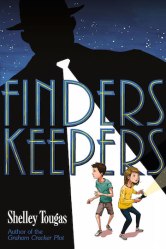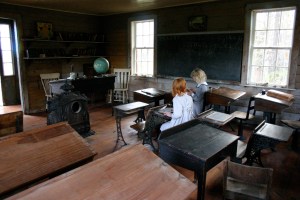 Laurie Edwards is a Mixed Up Files member with a very busy month. Three of her non-fiction titles come out this month. They are all from the educational publisher Cengage and they are: Ancient Egypt, Imperial China, and West African Kingdoms. She graciously stole a few moments away from her time with a brand new grandbaby to answer my questions. Thank you and quadruple congratulations!
Laurie Edwards is a Mixed Up Files member with a very busy month. Three of her non-fiction titles come out this month. They are all from the educational publisher Cengage and they are: Ancient Egypt, Imperial China, and West African Kingdoms. She graciously stole a few moments away from her time with a brand new grandbaby to answer my questions. Thank you and quadruple congratulations!
1) All three of your books are about the ancient world. Do you have a long standing interest in history?
 I’ve always been fascinated by life long ago. I especially like finding out how people lived, so I enjoyed doing the research for these books. Sometimes we think that ancient people weren’t very advanced, but that isn’t true. All three of these civilizations invented items that are still used in our times, and scientists and historians are still trying to figure out how they created certain things. For example, no one knows for sure how the Egyptians built the pyramids.
I’ve always been fascinated by life long ago. I especially like finding out how people lived, so I enjoyed doing the research for these books. Sometimes we think that ancient people weren’t very advanced, but that isn’t true. All three of these civilizations invented items that are still used in our times, and scientists and historians are still trying to figure out how they created certain things. For example, no one knows for sure how the Egyptians built the pyramids.
My love of history also extends to fiction. I’m writing a young adult novel set in ancient China and two middle grade novels, one set in Russia during the pogroms and one set in Eastern Europe in 1050 CE. Capstone is publishing my young adult series set in the Wild West that I’m writing as Erin Johnson. The first two books, Grace and the Guiltless and Her Cold Revenge are out now, with two more to follow. I spent a lot of time doing research for all of these books.
I took a quick look at these titles and I think they’re going to be terrific for teens with a thirst for western writing which is not all that common in YA.
2)Your publisher works within the education market. How did you come to work with them? Do they assign a topic with an overall road map to the structure of the finished project or do you come up with the topic and structure yourself?
I’ve worked for Cengage, the publisher of these books, many times doing writing and editing. I started by writing short articles for them, and then later they asked me to write books. The first books I wrote for them were a biography of Rihanna, the Encyclopedia of Native American Tribes, and Pirates through the Ages (yes, another history title!).
 Because these 3 new books are part of a 10-volume set, the publisher wanted them to be consistent, so they gave me topics for the chapters (e.g., Geography, Art, Transportation and Communication) and a general layout for each chapter. The chapters needed to include a brief introduction, 2-3 sidebars, a glossary, 2-3 activities, and a set of questions. I chose what material to include in each chapter.
Because these 3 new books are part of a 10-volume set, the publisher wanted them to be consistent, so they gave me topics for the chapters (e.g., Geography, Art, Transportation and Communication) and a general layout for each chapter. The chapters needed to include a brief introduction, 2-3 sidebars, a glossary, 2-3 activities, and a set of questions. I chose what material to include in each chapter.
3) What was your favorite juicy tidbit from researching these books? Did you have a particularly useful source or an unexpected one?
I like finding primary sources, which are actual documents or pictures from people who lived during that time. The Chinese and Egyptians both kept good records of events, so I read translations of many ancient documents. We also included some as sidebars in the books. The West Africans didn’t have a written language for much of the period the book covered, which meant that their primary sources were the griots, or storytellers, who memorized all their history.
 One of my favorite documents was a list of rules from an ancient Chinese boarding school. Instead of bells, they used clappers. The first time the clappers sounded, students woke and washed. By the second round of clappers, they needed to be dressed in their robes. After that, they bowed to their teachers. They then followed a whole list of rules, many of which sound like classroom rules today, such as sitting properly, writing neatly, keeping desks tidy, and not eavesdropping. Students took turns washing the floor at the end of each day. Some different rules included never taking off their caps, socks, or shoes even in their rooms, and never going to bed before their elders.
One of my favorite documents was a list of rules from an ancient Chinese boarding school. Instead of bells, they used clappers. The first time the clappers sounded, students woke and washed. By the second round of clappers, they needed to be dressed in their robes. After that, they bowed to their teachers. They then followed a whole list of rules, many of which sound like classroom rules today, such as sitting properly, writing neatly, keeping desks tidy, and not eavesdropping. Students took turns washing the floor at the end of each day. Some different rules included never taking off their caps, socks, or shoes even in their rooms, and never going to bed before their elders.
Other fun sources were a list of rules from a Chinese pirate ship run by a woman and descriptions of Egyptian mummification. I also discovered ancient recipes, poems, stories, plays, jokes, and paintings showing daily life. Many of these can be found in the sidebars.
I love this! The combination of familiar rules–like write neatly–with completely wacky rules–like don’t go to bed until all the grownups are asleep and never take off your shoes! You’re a natural at making history engaging.
4) Do you do something special with the MG audience in mind?
Because MG readers are curious, I try to find unusual and interesting facts that will surprise them. But I also like to show that children from long ago have are like modern children in many ways. Knowing that ancient children disobeyed their parents, disliked school, or skipped their chores makes them more real and relatable.
5) I’ve only done a little bit of writing for educational publishers and it has been a while. If a person was interested in writing for the educational market what advice would you give them?
Educational writing is strongly tied to the core curriculum, so having some experience as a teacher or some knowledge of the expectations for the various grade levels is important. Rather than coming up with your own topics, you need to be willing to write books on the subjects that the publishers need or want. To get work in this field, check what publishers are looking for freelance writers and follow their guidelines. Many request a resume and a sample chapter. If they think your writing is suitable for their imprints, they may assign you a book or even a series.
6) Do you have a favorite MG non-fiction title or two you’d like to share?
Two nonfiction authors whose books I love are Candace Fleming and Susan Bartoletti. All of their books are well worth reading.
Here are the two most recent titles by these two authors.
Thanks again for sharing Laurie. Happy book birthday and happy birthday to your new grandchild!



































